Symptoms and consequences of chilling or freezing injury on greenhouse crops
Which greenhouse crops can tolerate exposure to freezing or near freezing temperatures and what can a grower expect from a crop that has been exposed to extreme temperatures?

With the recent polar vortex, some growers have seen symptoms of chilling and freezing injury on their greenhouse crops. Other growers are looking ahead to spring and are pondering the idea of finishing some of their crops outdoors to free up greenhouse space. In either of these situations, which crops can tolerate freezing or near freezing temperatures and what can a grower expect from a crop that has been injured from such temperatures?
Whether you are growing annual bedding plants in a greenhouse, high tunnel, cold frame or outdoors, the potential for chilling and freezing injury exists. Extreme temperature such as those that were experienced in many parts of the country during the recent polar vortex affected greenhouse crops due to either boiler and heater malfunctions or infiltration of cold air into the greenhouse. Which crops can survive freezing temperatures and how will this affect the crop? For more information on how to mitigate greenhouse heat loss, please refer my e-GRO article, “Preparing your Greenhouse for the next Cold Spell or Polar Vortex.”
What is freezing injury?
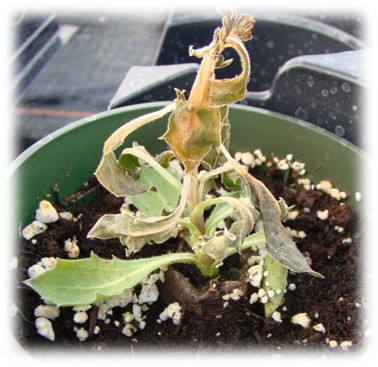
Freezing injury is damage that occurs to plant tissues when temperatures are below 32 degrees Fahrenheit (0 degrees Celsius). Pure water freezes at 32 F, however, water in plant tissue has dissolved salts (ex. plant sap), which freezes at temperatures a few degrees below 32 F. If water freezes in a plant cell, the sharp ice crystals can cut cell membranes, resulting in fluids leaking from the cell, leading to cell and plant death.
Freezing injury symptoms include tissue browning, blackening, wilting or curling of leaves and stems. The sweet potato vine and osteospermum shown here are exhibiting symptoms of freezing injury (Figs. 1 and 2). It is important to remember that younger plant tissue is more vulnerable to freezing than more mature tissue. In addition, plant tolerance to freezing temperatures increases as the plants are acclimated to the cold temperatures. In other words, a plant grown in a warm (heated) greenhouse is more susceptible to freezing injury than one that has been in a cold frame, high tunnel, unheated structure or outdoors.
What is chilling injury?
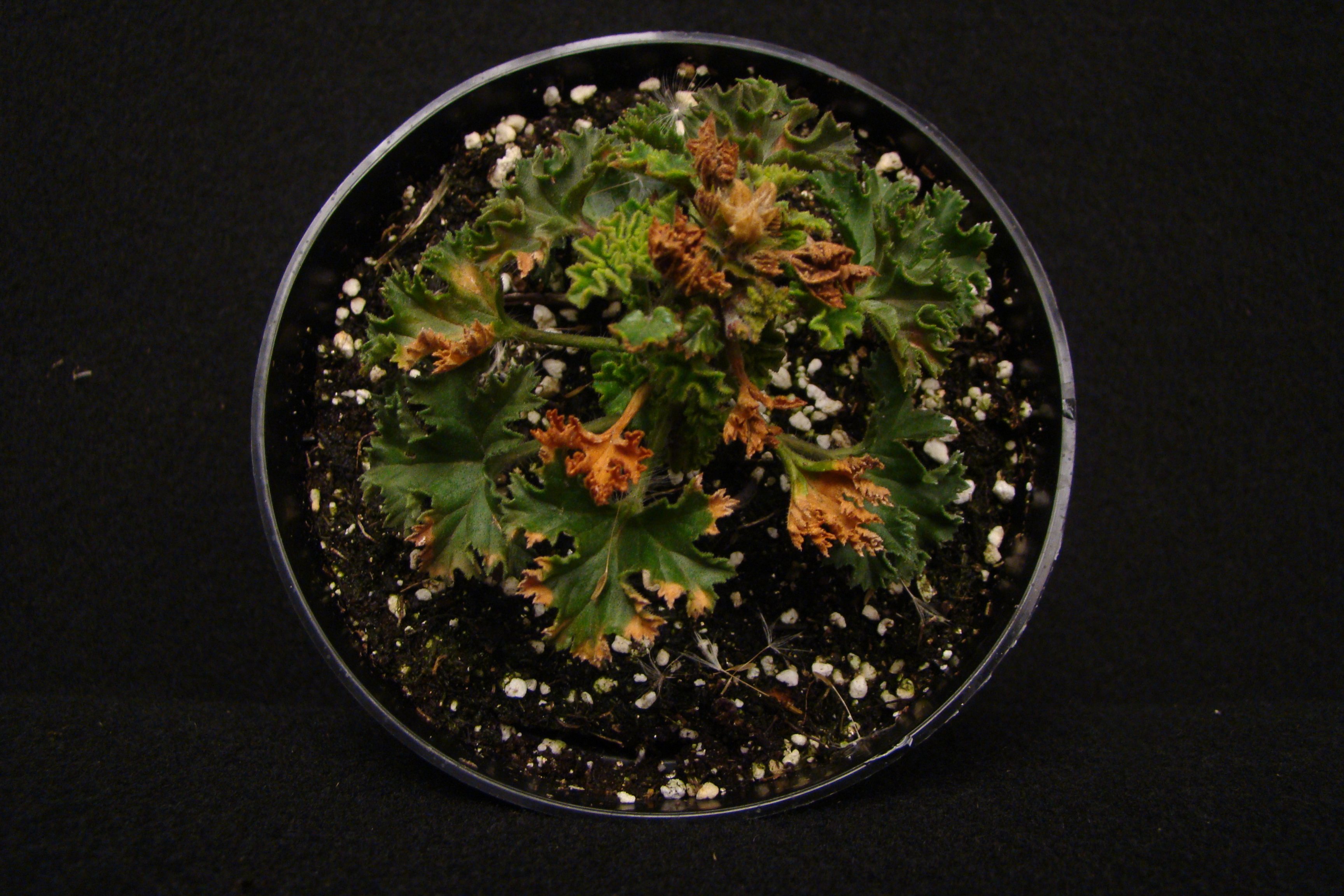
Chilling injury is a form of cold damage (with similar symptoms to freezing injury) that occurs to certain species when exposed to non-freezing temperatures. Chilling injury can occur at temperatures from 32 to 55 F (0 to 10 C). Plants from tropical origins are often chilling-sensitive, while most temperate zone species are not. For example, basil can show symptoms of chilling injury (Fig. 3) when exposed to temperatures below 54 F (12 C) during production, transport, distribution, storage and marketing in the retail environment. Therefore, 54 F is generally the recommended temperature for storage and shipment of most basil cultivars.
For more information on chilling injury of basil, refer to my e-GRO article, “Preventing Chilling Injury of Greenhouse and Vertical Farm Grown Basil.” Shown here is an example of chilling injury on basil and poinsettia that were exposed to a few hours of temperatures around 50 and 40 F (5.5 to 10 C), respectively (Figs. 4 and 5). Notice how plant death did not occur in this case, but the necrotic and curled leaves may make them unmarketable.
Crop cold-tolerance
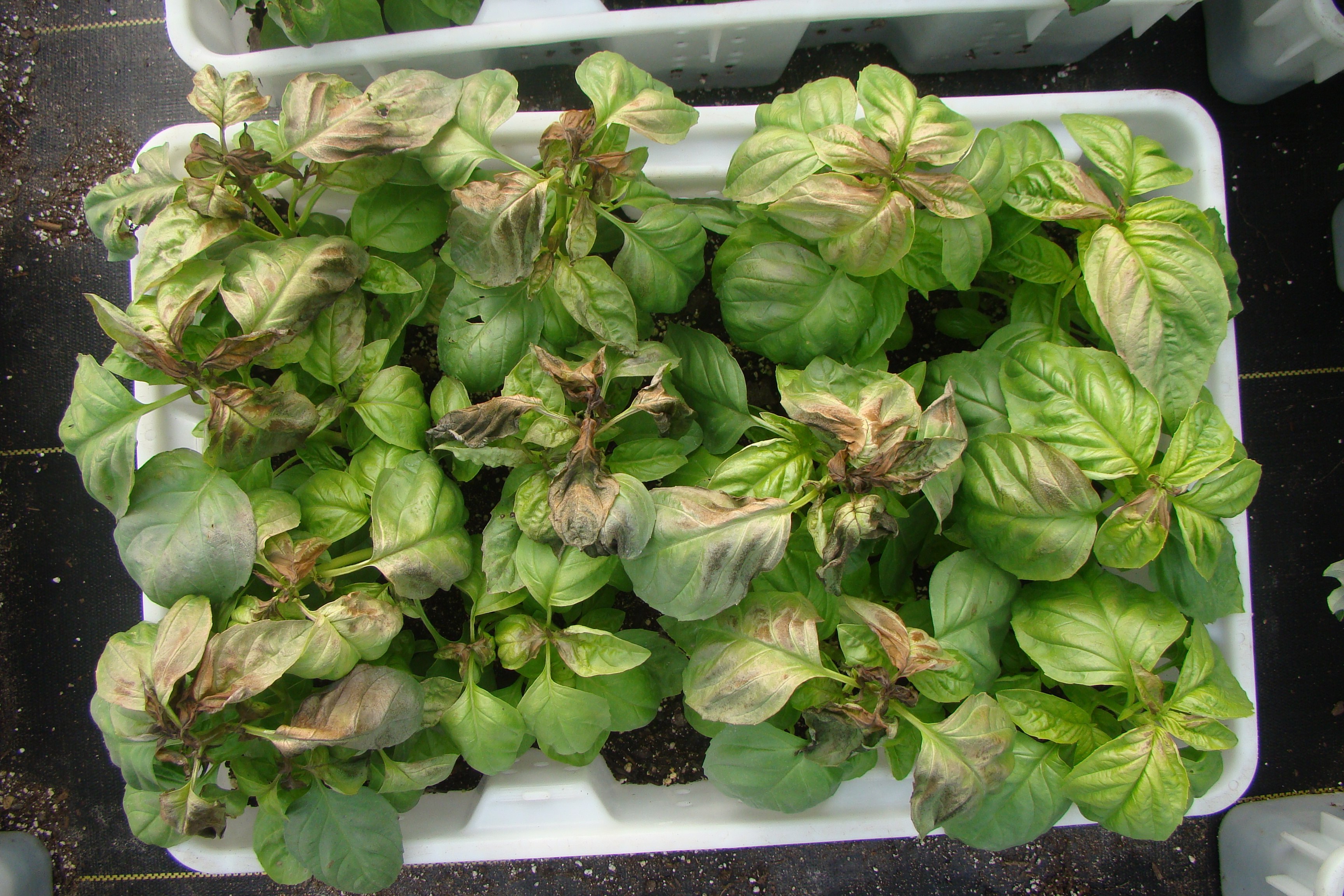
Temperature influences the rate of development and as a result of lower average daily air temperatures (MDT), flowering is often delayed when plants are grown at cooler temperatures. Over the years, research at Michigan State University has classified crops according to their base-temperature or temperature at which development stops. Can these classifications help determine if a crop will survive a cold temperature event?
Tropical and subtropical crops such as ageratum, alternanthera, angelonia, basil, celosia, cleome, coleus, cosmos, lantana, pentas, poinsettia, portulaca, sweet potato vine, vinca and zinnia are classified as cold-sensitive because their development stops at a base temperature of 46 F or higher. Therefore, these crops will not likely survive if exposed to freezing or near freezing temperatures.
Another group of greenhouse crops is classified as cold-intermediate (or cold-temperate) crops as their development stops at moderately low temperatures of 40 to 45 F. These crops include calendula, dahlia, geranium, impatiens, lobelia, some petunia cultivars, verbena and wax begonia.
Lastly, crops with relatively low base temperature (39 F or lower) are classified as cold-tolerant and include dianthus, diascia, heliotrope, American and French marigold, nemesia, osteospermum, some petunia cultivars, snapdragon, stock and viola. No matter what the base temperature classification is for a crop, flowering time of all crops decreases as temperature increases.
Acclimating plants
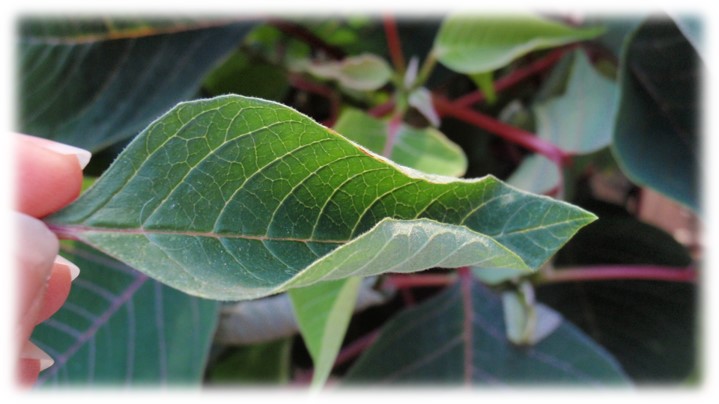
If you are going to finish some crops outdoors or in an unheated structure, choose from the cold-tolerant and potentially some from the cold-intermediate list above. Transplant the plugs or rooted cuttings in the greenhouse and grow under normal production protocols until the crop has a well-established root system before you begin acclimating them to cooler temperatures. During acclimatization, lower the greenhouse temperatures to 45 to 55 F (7 to 13 C) for about a week or more before moving the crop outdoors or into an unheated structure. Only move plants outdoor when the danger of a hard frost (less than or equal to 28 F, or -2 C) is minimal in your area. If you have rolling benches, crops can be moved back in to the greenhouse when the potential of a hard frost exist. If you cannot move the crop inside a heated structure, pull a row cover such as reemay cloth over the plants.
Benefits and risks of outdoor growing
Compared to greenhouse production, lower air temperatures, higher light levels and increased air movement can be expected with outdoor production. Therefore, we conducted a study to:
- Compare the growth and development of 10 annual bedding crop species grown in an unheated high tunnel or unprotected outdoor growing area.
- Evaluate the effect of a one-week initial acclimation period in the high tunnel prior to outdoor production.
- Quantify the effectiveness of these production methods for producing high-quality bedding plant crops.
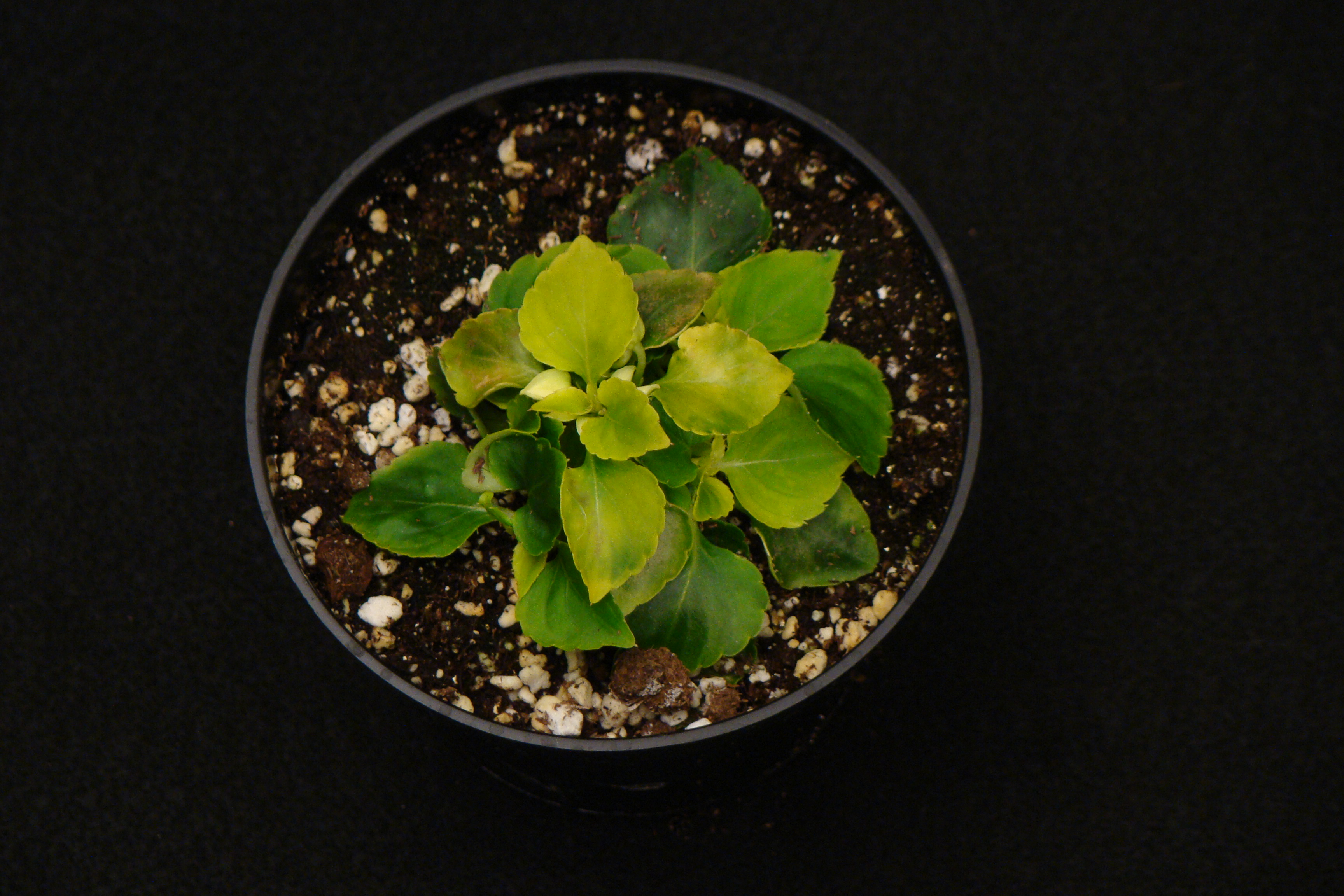
The cold-tolerant and -intermediate annual bedding crop species included ‘Aloha Kona Hot Pink’ calibrachoa, ‘Royal Lavender’ regal geranium, ‘Bella Oceano’ lobelia, ‘Antigua Orange’ African marigold, ‘Summertime Pink Charme’ osteospermum, ‘Potunia Plus Red’ petunia, ‘Phloxy Lady Purple’ phlox, ‘Lilac Flame’ primula, Hot Cakes White’ stock and ‘Empress Purple’ verbena. This information gave us some insight into what crops can be produced outdoors and the effects on crop timing and growth; and demonstrates any benefits of an acclimation period prior to outdoor production. We also were able to quantify what would happen to a crop after exposure to freezing temperatures.
Outdoor air temperatures fell below freezing on five nights of our study in April 2015. The entire marigold crop (cold-sensitive species; Fig. 4) growing outdoors exhibited symptoms of freezing injury and died after exposure to temperatures of 24 F (-4.2 C). The regal geranium crop exhibited signs of chilling injury (Fig. 5); and while they were able to recover, this caused a delay in time to flower of 26 days (Fig. 6) compared to those grown in the high tunnel.
As expected, all species flowered and became marketable sooner in the high tunnel than outdoors. This is likely due to the higher ADT in the high tunnel and thus more rapid development. Primula, calibrachoa and verbena were delayed by only four to seven days outdoors compared to in the high tunnel, while lobelia, phlox and petunia were delayed by nine to 11 days. Although, when given an acclimation period of one week in the high tunnel prior to outdoor production, all species, other than regal geranium, were delayed by one week or less (two to seven days).
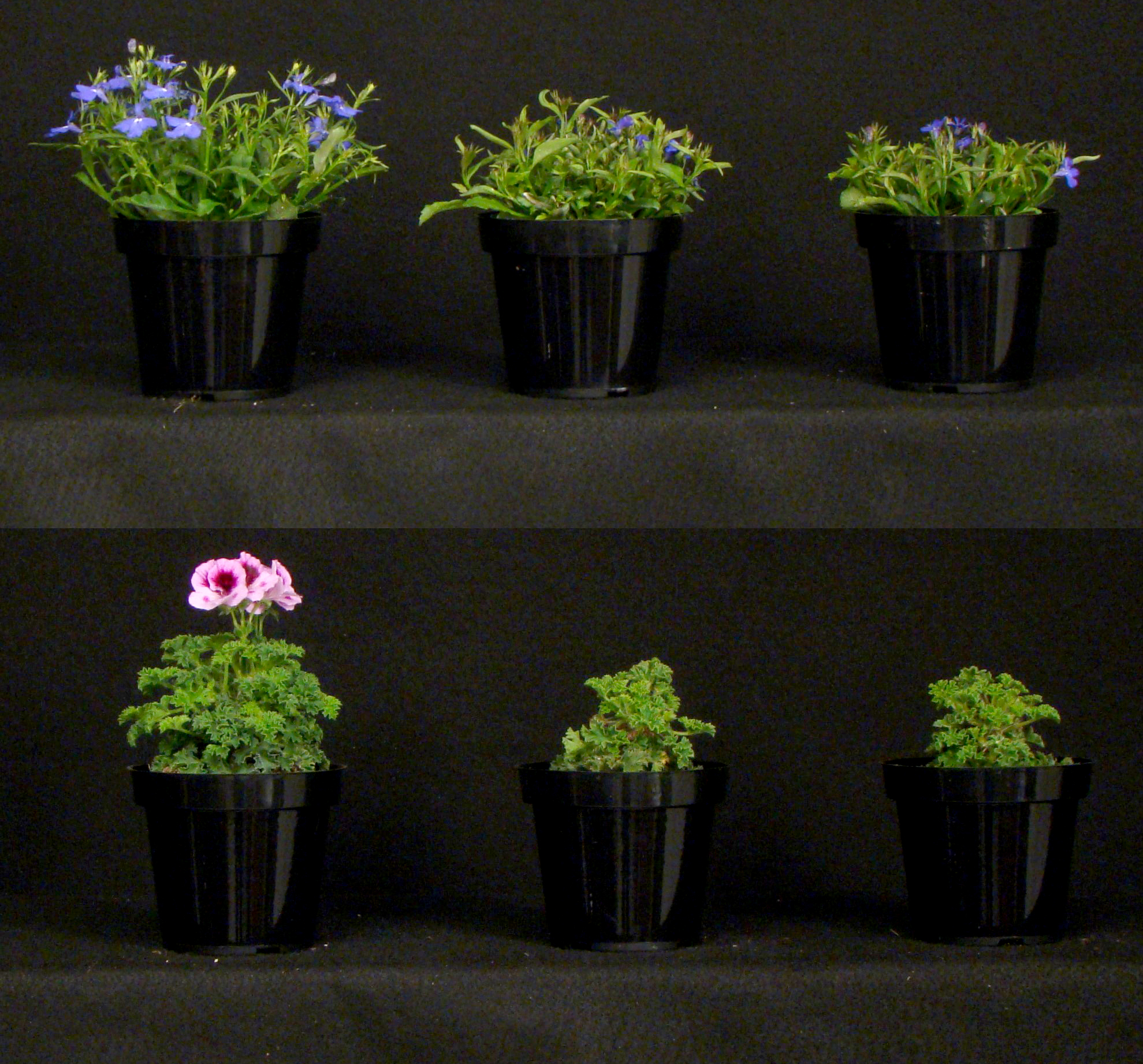
Increased light levels outdoors, as well as increased mechanical stress from wind and precipitation, caused reduced stem length and growth for lobelia, osteospermum, stock and verbena. Branch number was similar or greater outdoors compared to in the high tunnel for all species. Overall, more compact growth was observed in crops grown outdoors compared to in the high tunnel, though flowering was somewhat delayed for all species. Freezing injury in some instances resulted in a “hard pinch” for some species such as osteospermum (Fig. 7).
Issues of crop loss, chilling or freezing injury, flowering delay and weed pressure were apparent in outdoor production, which could be of great concern to growers. Meanwhile, benefits of outdoor production include the low cost of production, compact growth (fewer or no PGRs), increased branching and flower number, and reduced insect pressure.
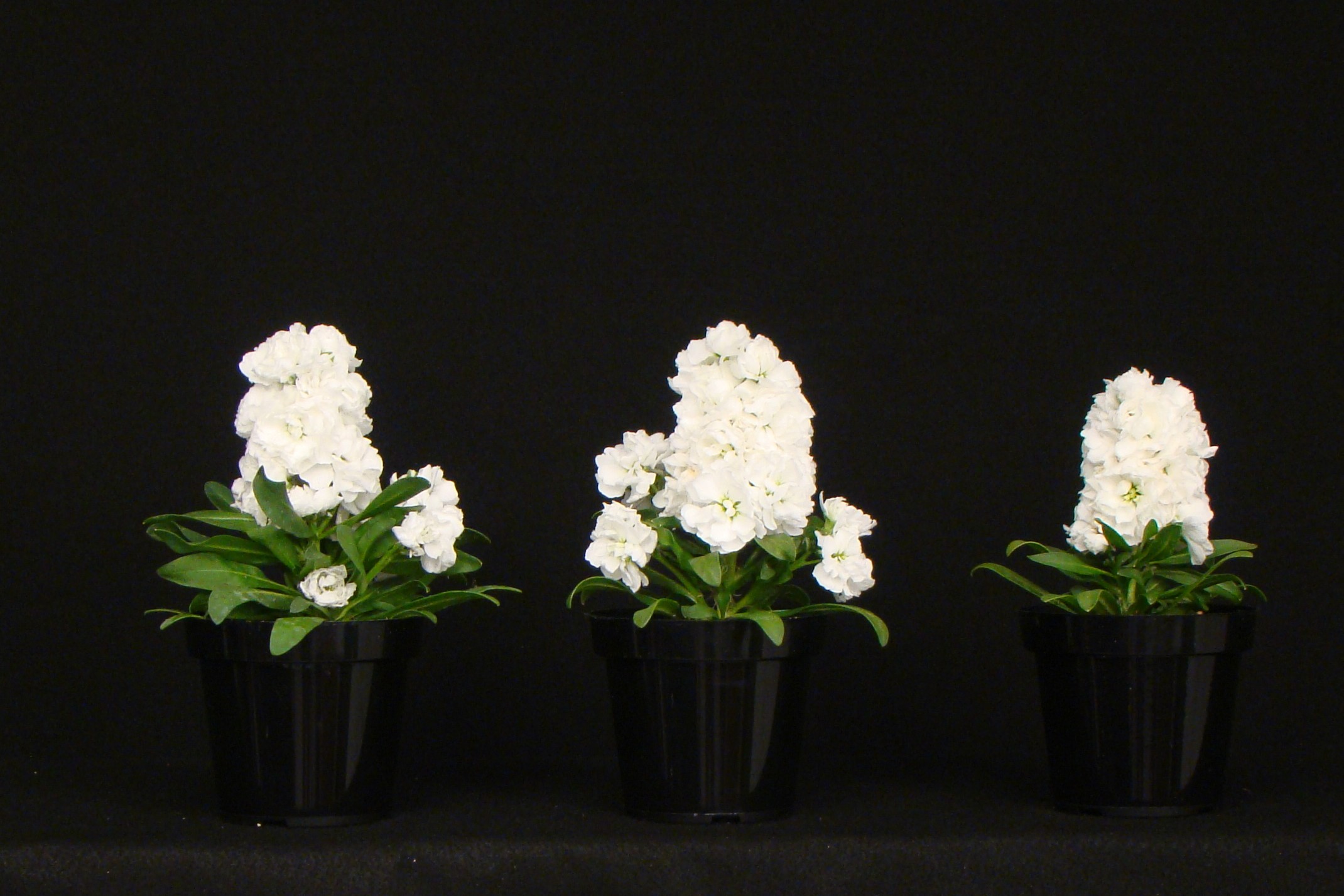
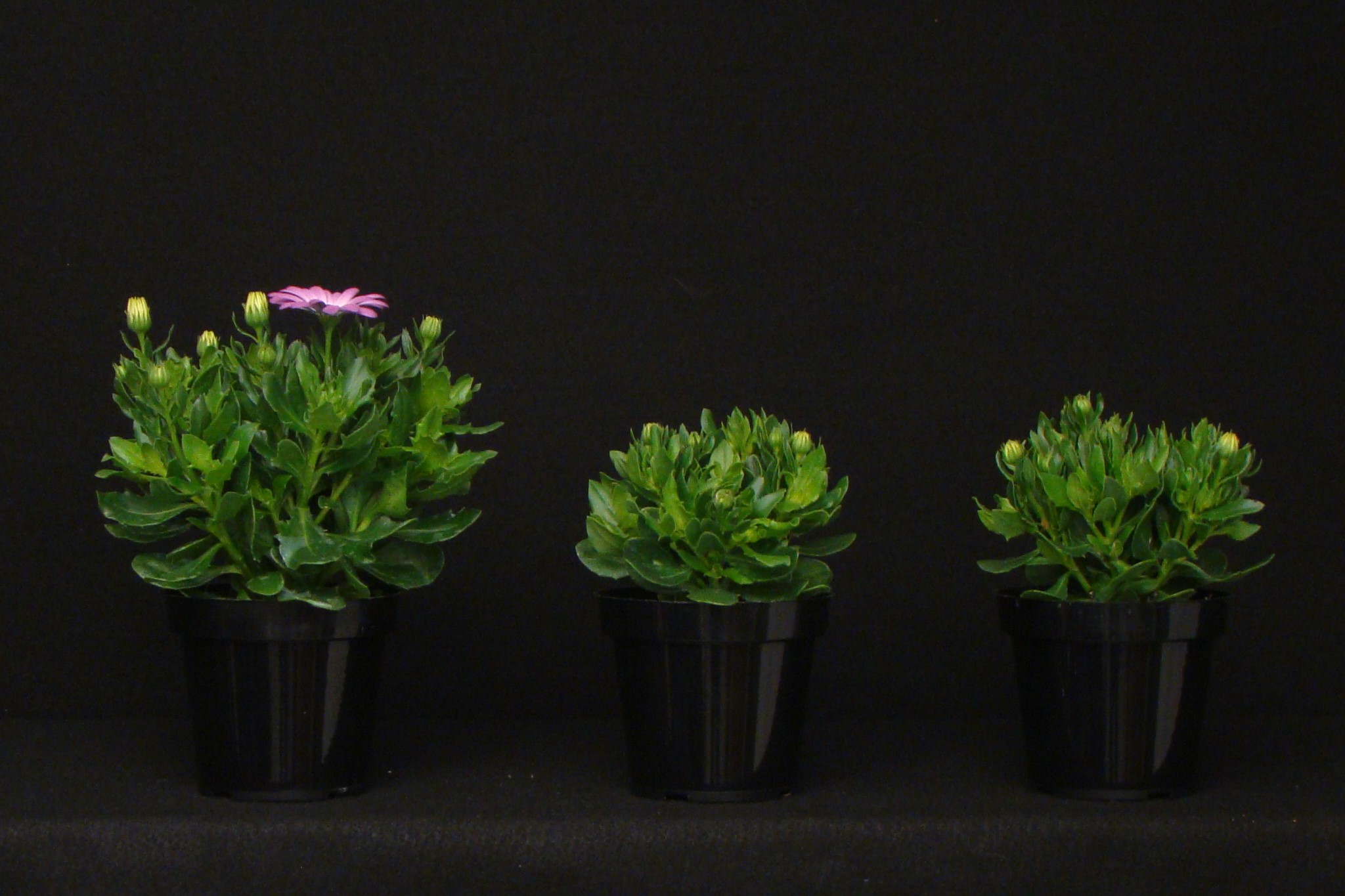



 Print
Print Email
Email

